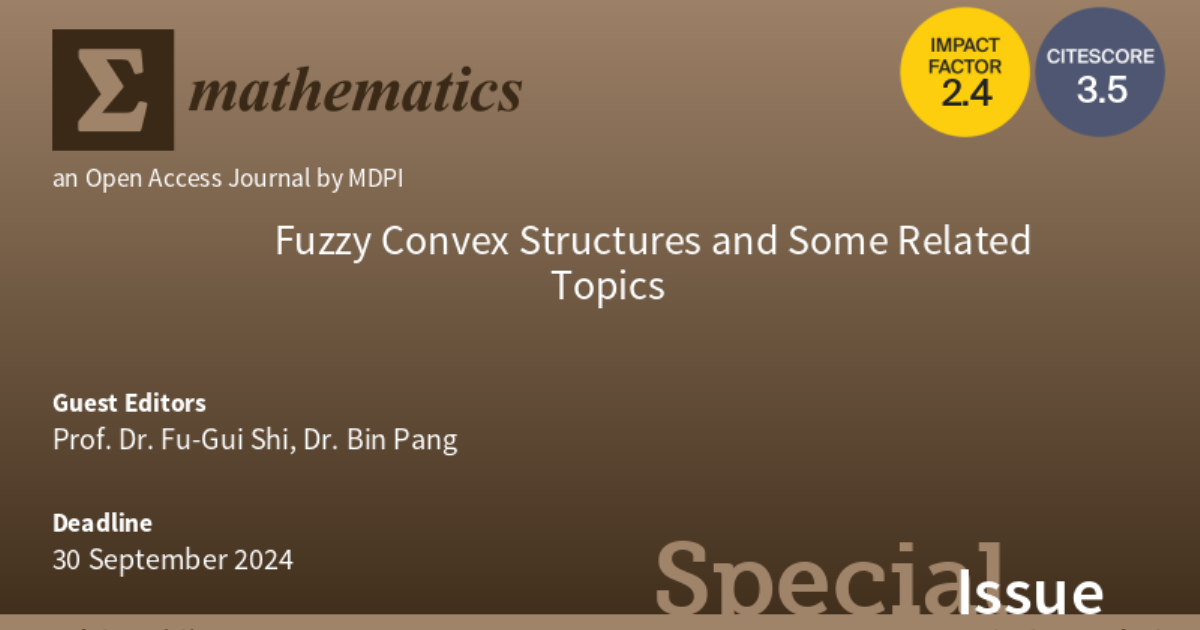Fuzzy Convex Structures and Some Related Topics
A special issue of Mathematics (ISSN 2227-7390). This special issue belongs to the section "Fuzzy Sets, Systems and Decision Making".
Deadline for manuscript submissions: 30 September 2024 | Viewed by 6399

Special Issue Editors
Interests: fuzzy convex structures; fuzzy topology; fuzzy matroid; fuzzy algebra
Special Issue Information
Dear Colleagues,
Since Zadeh introduced the concept of fuzzy sets, fuzzy set theory has been applied to many research areas, including both of theoretical and applied aspects. In this issue, we will focus on the theory of fuzzy convex structures and its related topics, which combines fuzzy set theory and many theories that are related to convexity theory. From the theoretical aspect, this issue will be referred to fuzzy convex structure, fuzzy topological structure, fuzzy matroid and fuzzy algebra. From the applied aspect, it will concentrate on fuzzy convex optimization, fuzzy game, fuzzy data envelope and fuzzy rough set.
Prof. Dr. Fu-Gui Shi
Dr. Bin Pang
Guest Editors
Manuscript Submission Information
Manuscripts should be submitted online at www.mdpi.com by registering and logging in to this website. Once you are registered, click here to go to the submission form. Manuscripts can be submitted until the deadline. All submissions that pass pre-check are peer-reviewed. Accepted papers will be published continuously in the journal (as soon as accepted) and will be listed together on the special issue website. Research articles, review articles as well as short communications are invited. For planned papers, a title and short abstract (about 100 words) can be sent to the Editorial Office for announcement on this website.
Submitted manuscripts should not have been published previously, nor be under consideration for publication elsewhere (except conference proceedings papers). All manuscripts are thoroughly refereed through a single-blind peer-review process. A guide for authors and other relevant information for submission of manuscripts is available on the Instructions for Authors page. Mathematics is an international peer-reviewed open access semimonthly journal published by MDPI.
Please visit the Instructions for Authors page before submitting a manuscript. The Article Processing Charge (APC) for publication in this open access journal is 2600 CHF (Swiss Francs). Submitted papers should be well formatted and use good English. Authors may use MDPI's English editing service prior to publication or during author revisions.
Keywords
- fuzzy convex structures
- fuzzy topology
- fuzzy metric
- fuzzy algebra
- fuzzy order
- fuzzy matroid
- fuzzy game
- fuzzy graphs
- fuzzy rough set
- fuzzy clustering
- fuzzy data envelope






